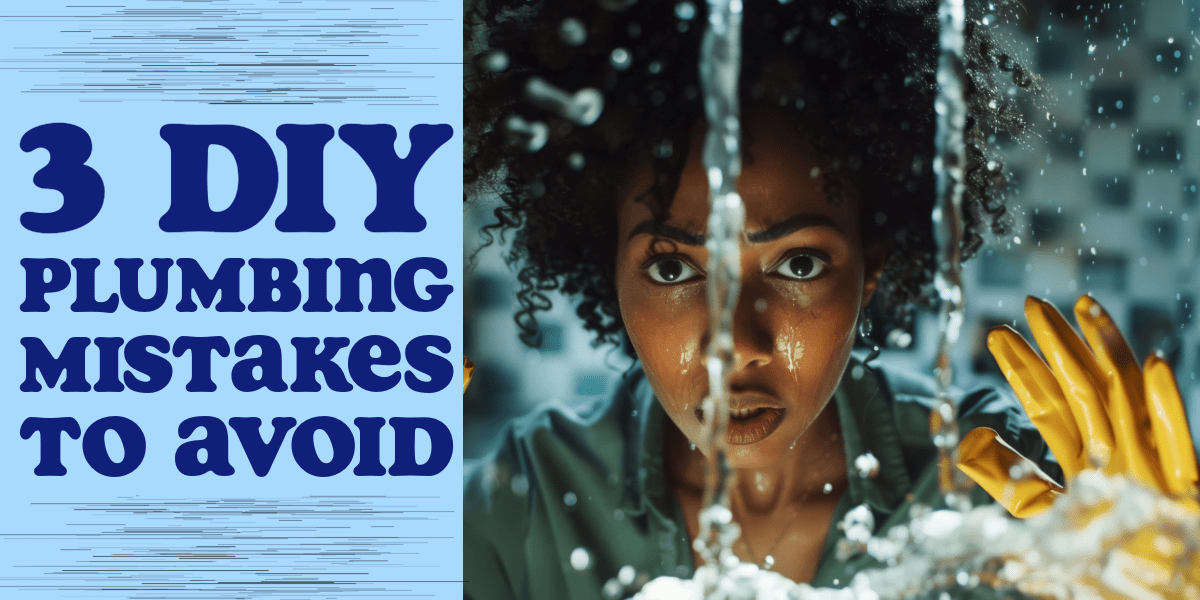Sooner or later, as a homeowner, you will face a plumbing issue that may require more attention than normal. It is always recommended that you are prepared for when these things happen. Most homeowners and DIYers can handle many plumbing solutions capably. If you are up to the task, you will not have to pay a professional to do it, which could be a money-saving move to your advantage. Before starting though, here are a few reminders to avoid the most common mistakes in do-it-yourself plumbing projects:
Using Chemical Drain Cleaners
Drains can often get clogged, and this is a plumbing problem that is easily resolved using do-it-yourself methods. Unfortunately, the most common mistake that DIYers do is to reach for chemical drain cleaners, which are formulated to dissolve clogs. Because these cleaners contain harsh chemicals, they are often toxic to eyes and skin, and dangerous if accidentally swallowed. They may emit noxious, harmful fumes, especially to children and pets. Most chemical drain cleaners produce heat, and therefore, upon contact within pipes, may soften or damage them. The disadvantages to using chemical drain cleaners are astounding, and it would be better if you would go for alternatives.
What to do instead:
Manually clear any obvious clog around the drain, and then try to clear the clog using a plunger designed for that particular drain. If a plunger just won’t do it, use a snake or an auger that could reach the clog down the pipes. You can inspect the P-trap (underneath the sink) in sink drains and remove any obstruction. Some have successfully poured hot boiling water down the drain to clear obstructions. If you must use a drain cleaner, opt for less harsh and more natural alternatives such as enzyme cleaners that contain enzymes and bacteria that literally eat away at organic matter in clogs. They are also environmentally safer than chemical drain cleaners, which are known to leach into soil and water.
Overtightening of Connections in Plumbing Fixtures
When a project is as simple as preventing a leak, it is easy to assume that tightening bolts and other connections between pipes and hoses will get the job done. And if that is the case, then tightening these connections as securely as possible would seem to be the best move. Be careful though, as that action may cause you to pull them too much, leading to the fittings producing splits or getting cracked. The threads between connections may also get stripped. Even toilet bolts that are overtightened may cause the toilet’s porcelain to crack, which may require replacing your toilet altogether.
What to do instead:
It is important to be gentle in your approach and try to tighten bolts and fittings incrementally. Tighten first with your hand, then in quarter-degree turns until the bolt is securely in place and just tight enough.
Not Remembering to Turn Off Water Supply
This mistake may be the most obvious, but it is often the most overlooked factor when dealing with a plumbing emergency. This is similar to turning off electrical power to avoid the risk of electrocution. Turning off the water supply will help avoid any issues with water pressure. It would be an important consideration to make, since the water can just gush out as you are working on a faucet, for instance. Flooding is a great possibility, leading to water damage not only in the area of concern but also in adjoining rooms or floor space.
What to do instead:
Locate the shut-off valves for your home’s water supply. Consider the local shut-off valve first. This is the shut-off valve at the fixture itself. These valves are located quite near the fixture or appliance. For instance, the sink valves can be found under the sink. Toilet valves are located near the base of the toilet. Washing machines are connected to valves located either close to a wall or on a utility sink. It is the same situation for any other fixture. Try to determine these locally placed valves. It will help to shut off the water at this level instead of at the main shut-off valve so that other fixtures in your home can continue working uninterrupted.
If you cannot locate the local shut-off valve, go for the main one. This is the valve that controls the water supply to the entire house. Therefore, turning off the water at this level will stop the water flow to all plumbing fixtures in the house. You must turn off the water supply at the main shut-off valve if you are working on a leak along the main branch line. Well before any plumbing emergency occurs, however, it is recommended that you are already familiar with the location of your main shut-off valve for your home. It is a large valve, usually located on a wall outside of the house, near the water meter or near utility areas such as the garage or basement along exterior walls, or even at eye level in your basement. Sometimes, the main shut-off valve is buried close to the street, where the water utility company can easily access. It is best to find out from your water utility company if you can turn off this valve in an emergency. Just be aware that it may take a little bit of muscle to turn the valve off at the main, so wear a work glove or be ready for special tools (e.g., wrench) to deal with this task.
Handling a plumbing emergency on your own may be a doable task in certain situations. If it gets overwhelming or confusing, a licensed plumber can deal with it efficiently. Count on the
expertise of our licensed plumbers at Five Star Home Services for all emergency plumbing services. Call Five Star Home Services now at (833) 405-8009.

